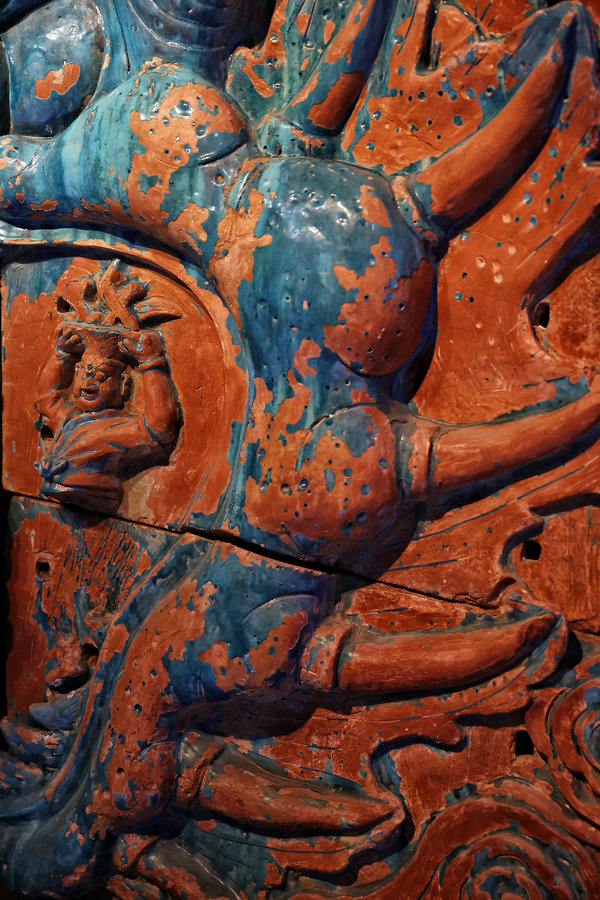

Visually reborn
The video game phenomenon Black Myth: Wukong re-creates many important ancient sites in Shanxi, including Yongle Palace, in its design. This has led to a surge in visitors to this place originally designed for inner tranquillity.
"Unfortunately, many historical details have gradually faded with the flow of time," says Wang Yun, head of the exhibition's technical team. "Tourists flocking there may also find that the light in the temple is too dim to fully appreciate its beauty."
Based on digitized materials, Wang's team used artificial intelligence to present a virtual re-creation of the temple's architectural layout and murals in high definition. Through the use of motion-capture, AI has helped to make the Taoist deities in the murals "move "naturally on-screen.
In the gallery, museumgoers can visit dome theaters and virtual reality facilities to experience the temple as it was seven centuries ago.
"To some extent, technology is redefining the relationship between cultural artifacts and the public, and breaks the restrictions of space and time," says Sun Xiaobing, deputy director of Art Exhibitions China, co-organizer of the exhibition. "People can be inspired to explore the beauty of civilization and understand the stories behind the artifacts."
Screens have been set up behind the glazed ridge of the Sanqing Hall, and light projected on the ancient tiles demonstrates the circle of the seasons.
On the roof of an aged temple built by ancient people in the name of immortals, visitors may experience an epiphany, namely that what is really "immortal" is people's awe of time, and love for their preserved history.